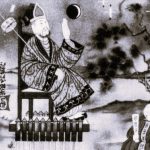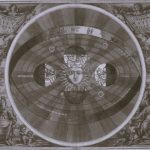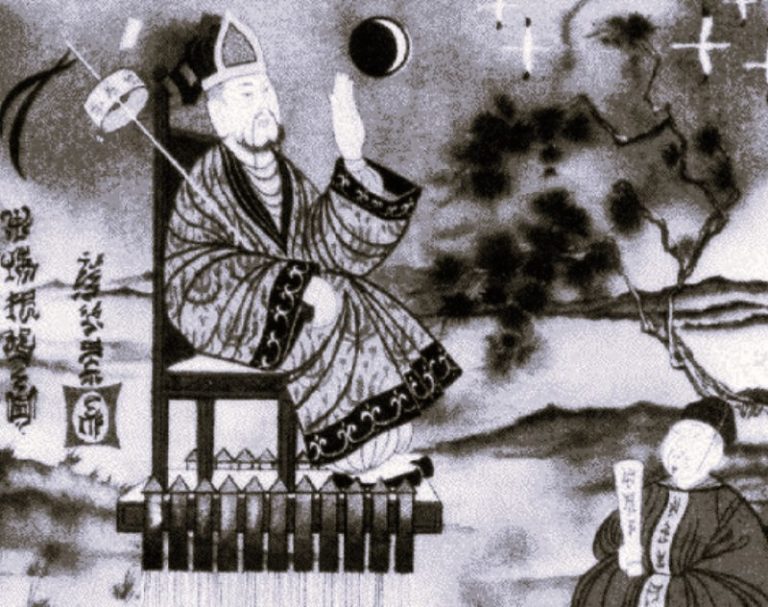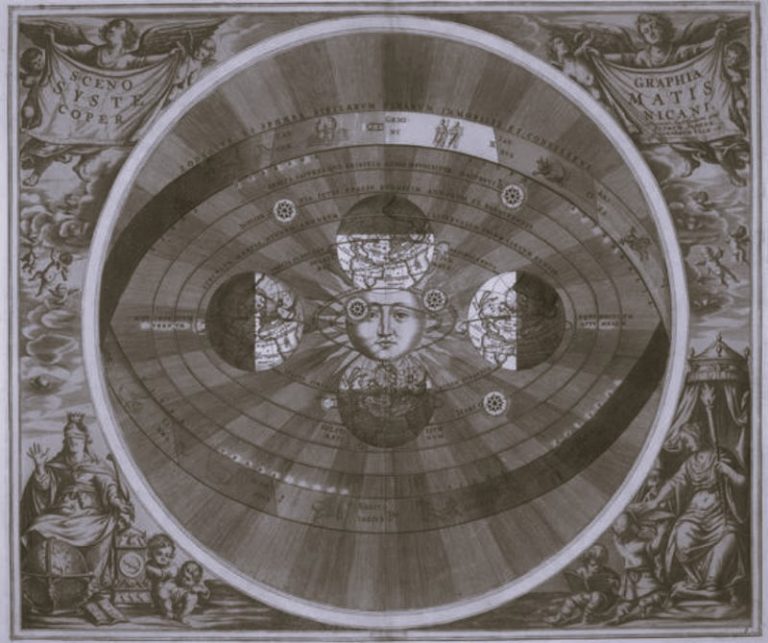

Eventually the Catholics put Hitler in power.

By Dr. Mike Magee
President
Minverva University
Typically Christian, the Christian majority of the Weimar Republic had never been happy with a secular republic. By the early 1930s, roughly two-thirds of German Christians repeatedly voted for candidates who promised to overthrow democracy. Protestants had given the Nazi party its main backing leading up to 1933, being more likely to vote for right wing parties because they had no right wing party of their own, unlike the Catholics. Evangelical youth was especially pro-Nazi. 90 percent of Protestant university theologians supported the Nazis. Protestant pastors defended Nazi murders of “traitors to the Volk” from the pulpit. Considerable numbers of individual clergymen viewed the growth of fascism with suspicion, that is true, but antifascist Protestants found themselves marginalized, and their reservations did not stop the favourable policies of church institutions themselves. Those who turned to outright criticism of fascism made their last appeals from the death cell. Hitler had a plan to unite the evangelical sects, but, though many pastors Nazified, the plan failed because the evangelists could always find incompatible differences in their Christian beliefs. It showed Hitler did not always get his own way.
The Catholic clergy were at first more opposed to Hitler, but their anti-Semitism supported him despite themselves. Of course, businesses were pro-Nazi, in general, because of their anti-communism, and churches and business had anti-communism and money as common interests. The popes of this period were both Pius. Pius XI, a clever man, was pope from 1922 until 1939. His main activity was in secret negotiations. While apparently co-operating with the socialists with whom he was negotiating in Belgium, he abandoned Italy to Mussolini. He also supported the fascist tyranny of Pilsudski in Poland, while writing erudite encyclicals on moral and political principles. These latter are what apologists now cite at their critics, the underhand “diplomacy” being forgotten. Pius XII, pope from 1939-58, as a priest, Eugenio Pacelli, was an under secretary of state in the Vatican City before being appointed a bishop and the Papal Nuncio to Bavaria in 1917. From then until 1929, he had practice in preparing Papal concordats for Germans, doing so for Bavaria and Prussia, precursors of the Nazi Concordat he negotiated in 1933.
“Most German Christians supported the Reich; many continued to do so in the face of mounting evidence that the dictatorship was depraved and murderously cruel.”
— Church and State (@ChurchAndStateN) May 18, 2022
The Great Scandal: Christianity’s Role in the Rise of the Nazis https://t.co/2MLypPWKuO via @ChurchAndStateN
After the War, critics pointed out that the pope had never made any move to protect the Jews persecuted by the Nazis, and had never even spoken out against it. The concern of popes was the Christian heresy of communism, not Jews or Nazis. The American Cardinal Gibbons, returning from the election of Pius XI, was asked by a US reporter what he thought of papal infallibility. He replied, smiling:
Well, he called me Jibbons.
Pius XI, issued encyclicals directed against both Mussolini and Hitler in the 1930s—like Mit brennender Sorge, With Deep Anxiety (1937)—but they were mild enough not to attract attention or sour relationships between the dictators and the Catholic Church. Little of the criticism there was was directly against fascist totalitarianism. Most was hidden in more general attacks on “secularism”, and the totalitarianism meant was Bolshevism not fascism. Bolshevism was the totalitarianism that was unequivocally secular, and many of the clergy approved of fascism as a bulwark against communism—in the “historic battle of resistance to Bolshevism”.
Eventually the Catholics put Hitler in power. The devoutly Catholic Chancellor Franz von Papen, not a fascist, but right-wing, brought about Hitler’s electoral victory. Papen dissolved the Reichstag in 1932, forming a coalition between the Nazis and the Catholic Zentrum party that had become anti-democratic under the leadership of the priest, Ludwig Kaas, from 1928. Papen made Hitler Chancellor in 1933, stepping down to the vice-Chancellorship. The Catholic Church congratulated Hitler, and commanded the laity to be loyal to this regime, as it always did. Joseph McCabe points out that the Annual Register impartially notes that the Bavarian Catholics, under orders from their bishops, supported Hitler.
In the last elections of the Weimar Republic, the Catholic vote for the Nazis (NSDAP, National Socialist German Worker’s Party) increased from little to 33%. Catholics claimed 30% of the population but got only 15% of the vote so plenty were voting Nazi. Communists and socialists had 37%. It was enough to make Hitler Chancellor and he immediately called another election, in which he could use his new power to influence the result. In March 1933, the Nazis polled 44% of the vote. The Hitler-Papen cabinet needed a two-thirds parliamentary majority to pass an enabling act to give it authority independent of the German Parliament. The communist and socialist deputies, who had refused the powers Hitler wanted, were liquidated under the Emergency Decree enacted after the Reichstag fire on 28 February, which suspended any personal liberties the Chancellor chose “until further notice”. The Zentrum voted for the act en bloc, in exchange for special conditions for the churches, allowing the necessary majority to be reached. The Zentrum then dissoved itself leaving its Catholic supporters to support the Nazis. Hitler was quite positive on the concessions to the Catholic party. He saw in Christianity, he said in the Reichstag…
…the unshakeable foundation of the moral and ethical life of our people… the most important factors for the maintenance of our society.
What he must have meant, and the Christians must have agreed, was enacted two days later on 23 March 1933. It allowed Hitler to issue laws without consulting the Reichstag! The Weimar Republic was destroyed, and much of western Europe was to follow in the next 12 years.
Really good piece.
— Church and State (@ChurchAndStateN) May 18, 2022
Christianity in Europe during WWII https://t.co/Az7ToJ7k9A via @ChurchAndStateN
The Protestants welcomed the Nazi regime too. The leadership of the Protestants had seen Weimar as ungodly and un-German, and Hitler immediately merged the 28 Protestant regional churches under a single head of a new Reich’s Church. The Reich’s Church was soon after given its own ministry of Church Affairs. A new sect called the German Christians also formed, having no trouble in finding scriptural justification for Nazi policies and practices. People called it the “SA of Jesus Christ”, the SA being the “sturmabteilung”, the thuggish brownshirts. Pastor Niemuller tried to organize an opposition, and was jailed for his trouble.
It took the Concordat of 1933, negotiated by Pacelli, between Nazi Germany and the Vatican to secure Hitler’s position. Negotiations were initiated by both sides, modelled on the 1929 concordat between Mussolini and the Vatican. In Italy, Giovanni Gentile had handed over the primary schools to the Catholic Church, and the deed was confirmed in the Lateran treaties. Plainly, the Italian fascists saw no obstacle to their aims in making the schools Catholic, and cannot have had any intention of “de-ecclesiasticization”, to use Nolte’s word. Equally the Catholic Church was happy to ride along with a fascism that treated it favourably.
Vatican policy toward Hitler was to work together in a similar way. Hitler put every effort into the 1933 project, impressing the Holy See with his own Christianity and his growing national and international influence. The church secured freedom of worship, denominational schools and the right to issue pastoral letters. The Church agreed to leave politics to the Nazis. The future Pius XII worked incessantly to finalize a treaty that negotiated away the Catholic Zentrum party in favour of the Nazis.
Pius XII, when we strip him down to reality, showed himself as unreal and ignorant as Hitler. Possibly more so. Both have been incoherent and headlong men, whom chance has made figure-heads for the undisciplined foolisnness of this dying age. The mere fact that a man by accident and misdirection can trail a vast trace of bloodshed and bitter suffering about the world does not make him any the greater or wiser.
H G Wells, Crux Ansata
The Latin Pact and the Reich Concordat illustrated the attitude of the Curia. The Holy See treated Zentrum as it had the Italian Catholic party which it negotiated away in the Concordat with Mussolini. Meanwhile Catholic Nazis set up the Cross and Eagle League and the Working Group of Catholic Germans to link Catholics and Nazis directly. Hitler was so confident that he had the Church in his hands that he promulgated his sterilization decree before the Concordat was even agreed. Forced sterilization of minorities and the mentally ill was nominally against Catholic teaching, but Hitler knew the Holy See was so keen on the Concordat it would not notice. With most German Catholics behind the Nazi party, Hitler was also confident enough to use violence against dissident Catholics, disrupting their rallies.
Christianity and its traditional discrimination in favour of Right Wing Politics https://t.co/ip3ByxDNXq via @ChurchAndStateN
— Church and State (@ChurchAndStateN) March 4, 2022
The church supported the new dictatorship by endorsing the end of democracy and free speech, binding its bishops to Hitler’s Reich by a loyalty oath. Professor Friedrich Heer, God’s First Love, observed that the Catholic press “worked smoothly in the service of the war propaganda machine”. In exchange, the Church gained enormous tax income, instatement of Catholic assemblies in schools, and criticism of the church was forbidden. Rome held a celebratory mass amid great pomp and circumstance. Catholic enthusiasm was so vaunted that Hitler had to defend himself to Protestant clerics and Nazi radicals who viewed this sudden friendship with Rome as a betrayal. Catholics adjusted to the dictatorship, indeed they flocked to the Nazi party.
Catholic apologists have had to fight a long battle over the scandals that have constantly emerged about Pacelli. He has been heavily criticised for his indifference to the Nazi murdering of Jews, and because, after the war, he ordered that Jewish children handed over by their parents to the Church for safeguarding should not be returned if they had been baptised. Needless to say, Catholics claim the documentary source of this information is false.
Hitler, during the war, even wanted to protect Pius XII! General Karl Wolff testified at the Nuremberg trials that Hitler had said, as early as 1943, he wanted to protect the pope from falling into the hands of the allies. If the allies threatened Rome, he would transfer the pope and the Curia into a safer place to stop the allies from securing the pope and the papal archives to use for political advantage. Catholics have recently re-presented the story in Avvenire, a Catholic Italian newspaper, as a Nazi plot in 1944 to kidnap the pope and abolish Christianity!
The Concordat bound all devout German Catholics to the state—the clergy through the oath and income, the laity through the authority of the church—but they had no open legal right to complain if the Nazis welched on the agreement. It offered no protection to Catholics as apologists have claimed, and Protestants, with no such protection, were treated no worse than the Catholics.
Opposition was rare among Protestants too, just as they were identical in outlook in the disgusting centuries of witch hunting that seem to have come closer yet again, and Germany’s Mormons and Seventh-Day Adventists, equally accommodating, were no better than the Catholics. Professor Robert P Erickson, Theologians Under Hitler says leading Protestants thanked God for Adolf Hitler. They were not extremists but…
…saw themselves and were seen by others as genuine Christians acting upon genuine Christian impulses… each supported Hitler openly, enthusiastically, and with little restraint…
They saw:
God’s hand in the elevation of Hitler to power.
Hitler was:
a gift and miracle of God… We Christians know ourselves bound by God’s will to the promotion of National Socialism.
The Church has happily accommodated some of the cruellest rulers in history.
— Church and State (@ChurchAndStateN) March 5, 2022
The Catholic Church and Right-Wing Politics https://t.co/bwLylPcB4K via @ChurchAndStateN
Nazism was “a call of God”, and agreement with state and Führer was obedience to the law of God. The churches banned non-Aryans from baptism. Only the Confessing Church was opposed to it:
The Confessional Church of Prussia was the only Christian body in the twelve-year history of the Third Reich to protest publicly against the unspeakable outrages inflicted upon the Jews.
Richard Grunberger
Apologists portray a handful of Christians, like Dietrich Bonhoeffer and Martin Niemöller, as heroes and martyrs of the “Church Struggle”, as fearless fighters against the Nazis. It was no anti-Nazi struggle, but simply a squabble between different Protestant denominations. The Confessing Church, of which Bonhoeffer was a member, would not criticize Nazi measures taken by the state:
The Confessing Church did not seek to espouse the cause of the Jews as a whole, nor to criticize the secular legislation directed against the German Jews and the Nazi racial philosophy.
Professor John S Conway
For the mainstream Protestant church and even within most of the Confessing Church, the question of church advocacy on behalf of non-Christians Jews did not even arise.
Victoria Barnett, For the Soul of the People: Protestant Protest Against Hitler
The examples of Christians resisting Nazism or helping Jews escape the death camps, cited by apologists as if typical of them consistently opposing fascism, are like the instances they cite of Christians preserving learning through the dark ages. The fact that so few examples are so often repeated shows they were no general phenomenon. The Christians in the dark ages destroyed learning generally, and it was Christian Nazis who were herding Jews into the cattle trucks and the gas chambers. Most Nazis were themselves Christians. That a few dissented from the majority is no commendation of Christianity as a moral movement. Indeed, the communists hated by most Christians had a far more noble record of opposition to the Nazis. Nor is there any indication that most Christians were operating against the wishes or policies of the churches whose membership they comprised. What churches, moved by the suffering of Christ or his pacific principles, publicly condemned Nazi policies? Michael R Marrus says there were so few objections from Christian leaders or churches because they found fascism “congenial”.
The role of women in Nazi thinking matched that of the Christians—submission. In 1934, Hitler said, at a rally in Nuremberg:
Man’s world is the state. The world of women is a smaller world. For her world is her husband, her family, her children and her house.
D G Williamson, The Third Reich, 1982, cited by S J Lee
Goebbels was even cruder:
The mission of women is to be beautiful and to bring children into the world… the female prettifies herself for her mate and hatches the eggs for him.
J Noakes and G Pridham, Documents on Nazism, cited by S J Lee
Women were induced to stay at home by a familiar method—bribery—child and “marriage credits”.
German Christians, right wing as ever, welcomed the Nazi terrorizing, imprisoning, and killing of the German Left. The leftists had long been despised by traditionalists, who were a large majority. The Nazis proudly publicized their concentration camps, though in a sanitized way, but no one doubted their true function in the newly founded police state. Yet few Christians raised any objection. Increasing institutional murder reported in the press as they became death camps was met with Christian apathy or approval, but little protest.
And what was the effect of all this on Christianity in Germany? Were Christians outraged at their leaders? Did they leave the Church in droves, either because their Churches were collaborating with Nazism, as they were, or because the Christians were being persecuted by the Nazis, according to the Christian myth? Well, no! In the 1930s when Hitler was grabbing absolute power and preparing for the war, the membership of churches stayed more or less constant, and, in the war itself, when Hitler’s aims and papal and Protestant scheming were evident, the membership of the German churches actually rose! After the war, one of the strongest parties that emerged in the new German democracy was the Christian Democratic Union (CDU). Apologists conclude that “Nazi policies failed to break down religious alliances”. It shows how easy it is to be beguiled by Christian liars, since the European fascists made no particular effort to break down Christian alliances, as this apologetic statement implies. Quite the opposite. Nazism was a Christian alliance.
Originally published by Church and State, 07.31.2007, republished under Fair Use terms for educational, non-commercial purposes.






